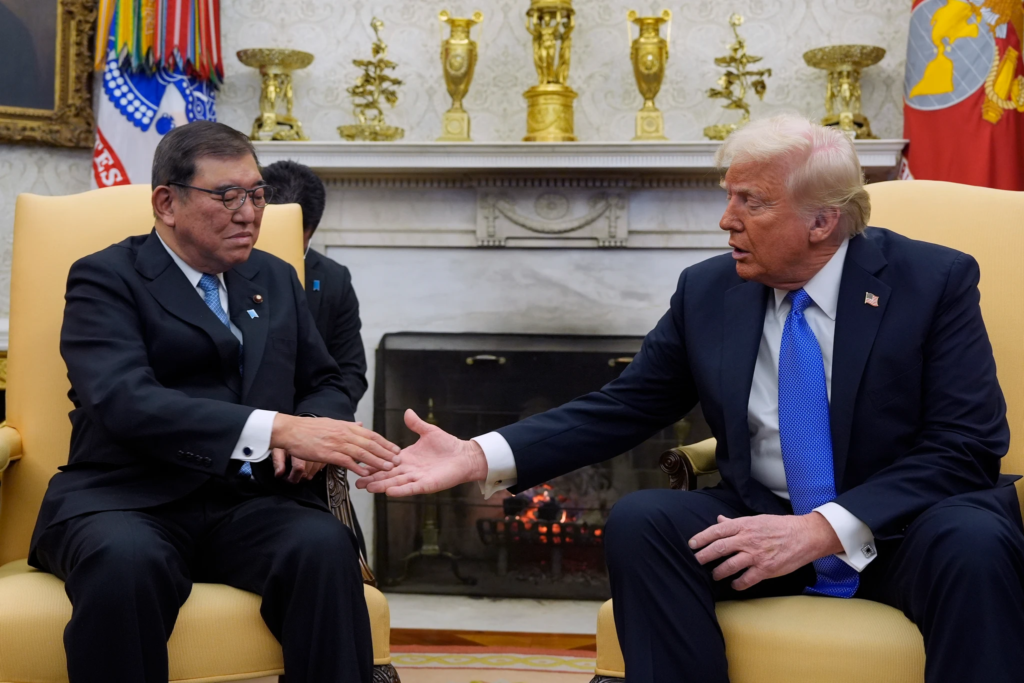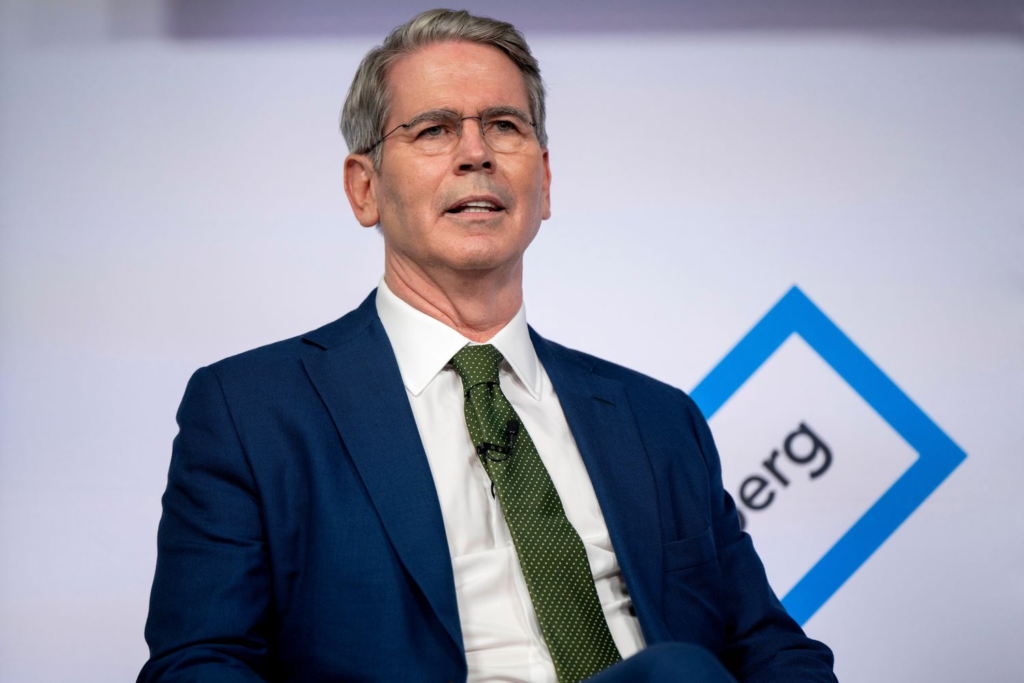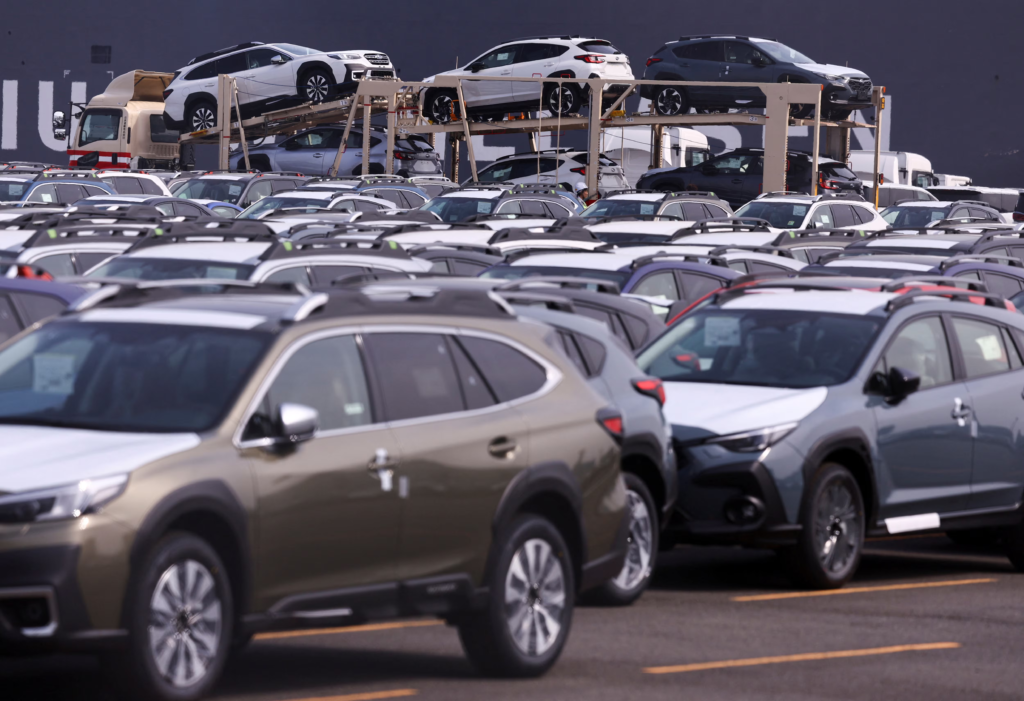Japan Seeks Urgent Trade Talks with Trump Over Tariffs
Japanese Prime Minister Shigeru Ishiba plans to visit the United States soon to negotiate tariffs with President Donald Trump.

This follows Trump’s recent decision to impose a 24% tariff on Japanese imports, along with an existing 25% duty on automobiles.
Direct Diplomatic Action
On Monday, Ishiba called Trump for 25 minutes. He urged him to rethink the “extremely disappointing” tariffs. Ishiba reminded Trump that Japan has been the largest foreign direct investor in the U.S. for five straight years.
The two leaders agreed that their ministers would handle further discussions. Japan’s Economy Minister Ryosei Akazawa will lead the Japanese side in the talks.
Planned Visit to the U.S.
Ishiba announced that he would visit the U.S. “as soon as possible.” He plans to show Japan’s role in creating American jobs and investing in U.S. industries. Ishiba also aims to prove that Japan conducts fair trade, opposing Trump’s claims of imbalance.
Economic Concerns in Japan
Analysts predict that the tariffs could cut Japan’s economic growth by up to 0.8%. The Nikkei 225 index has already fallen nearly 9% after the announcement.
Ishiba has ordered government action to help small businesses and protect jobs. He described the situation as a “national crisis.”
U.S. Response to Japan’s Concerns
Trump defended the tariffs as “strict but equitable.” He confirmed that talks with Japan will move forward. He argued that Japan has treated the U.S. unfairly in trade.

Treasury Secretary Scott Bessent and U.S. Trade Representative Jamieson Greer will lead talks for the American side.
How Did This Happen?
Trump began announcing tariffs in late March 2025. On March 27, he declared a 25% tariff on automobile imports. This move hurt Japan’s economy because cars made up 28.3% of its exports to the U.S. in 2024. Automobiles also account for about 3% of Japan’s GDP.
A few days later, Trump expanded the policy. He imposed a sweeping 24% tariff on all Japanese goods, set to start on April 9. Trump argued that these tariffs would address trade deficits and unfair practices.
Read more:
Ishiba responded with “strong concern.” He warned that the tariffs would hurt Japanese investment in the U.S. and damage economic ties. The sharp fall in Japan’s stock market on April 7 added pressure. Ishiba quickly sought talks with Trump.
Japan remains the largest foreign investor in the U.S., especially in automobile manufacturing. These investments have created many American jobs. Despite this, Trump has not spared Japan from the new tariffs.
Treasury Secretary Bessent said Japan would get priority in trade talks because of its quick response. However, Trump’s firm position shows he wants trade deficits resolved before easing tariffs.
Why Is Japan Worried?
Japan’s fear comes from its heavy reliance on exports to the U.S., its largest trading partner. The new tariffs, especially on automobiles, threaten its economic stability. Analysts warn that Japan could lose up to 0.8% of its growth if the tariffs stay.

The Bank of Japan has noted rising uncertainty. Japanese firms fear falling profits and a possible recession. The sharp drop in the Nikkei 225 index and the yen’s volatility have added to concerns. Ishiba also faces political pressure ahead of summer elections.
Japan has chosen not to retaliate. Instead, it hopes that negotiations and diplomacy will protect its economy and alliance with the U.S.
The History of Japan-U.S. Trade Relations
Japan-U.S. trade ties began in the mid-19th century. In 1853, Commodore Matthew Perry arrived in Japan and demanded open trade. This led to the Treaty of Kanagawa in 1854, which started formal trade and diplomatic relations.
Trade increased after Japan’s Meiji Restoration in 1868. Japan began exporting silk, tea, and later manufactured goods to the U.S.
After World War II, U.S. support helped Japan rebuild its economy. Japan focused on exports, especially automobiles and electronics. The U.S. became a key market for these goods.
By 2024, Japan exported $438.9 billion worth of goods to the U.S. But the U.S. imported far less from Japan, leading to a trade imbalance. Trump’s tariffs aim to address this gap.
Ishiba’s urgent visit to the U.S. reflects Japan’s desire to protect decades of strong trade ties while avoiding a damaging trade war.


 Iran’s Hypersonic Missiles Overwhelm Defenses
Iran’s Hypersonic Missiles Overwhelm Defenses  Elon Musk Pulls Back After Trump Post Controversy
Elon Musk Pulls Back After Trump Post Controversy  Is Trump Hyping Troops on U.S. Soil to Crush LA Protests?
Is Trump Hyping Troops on U.S. Soil to Crush LA Protests?  Did US Court Really Ban 11 Baby Names?
Did US Court Really Ban 11 Baby Names?  Why Japan’s Rural Areas Are Becoming Ghost Towns
Why Japan’s Rural Areas Are Becoming Ghost Towns